On June 25, in Tianjin, China, Prime Minister Pham Minh Chinh participated in a high-level policy dialogue titled "Vietnam’s new era: From vision to action" during the 16th WEF Tianjin conference. The session, chaired by WEF President Borge Brende, attracted around 100 delegates representing governments, organizations, and enterprises worldwide.
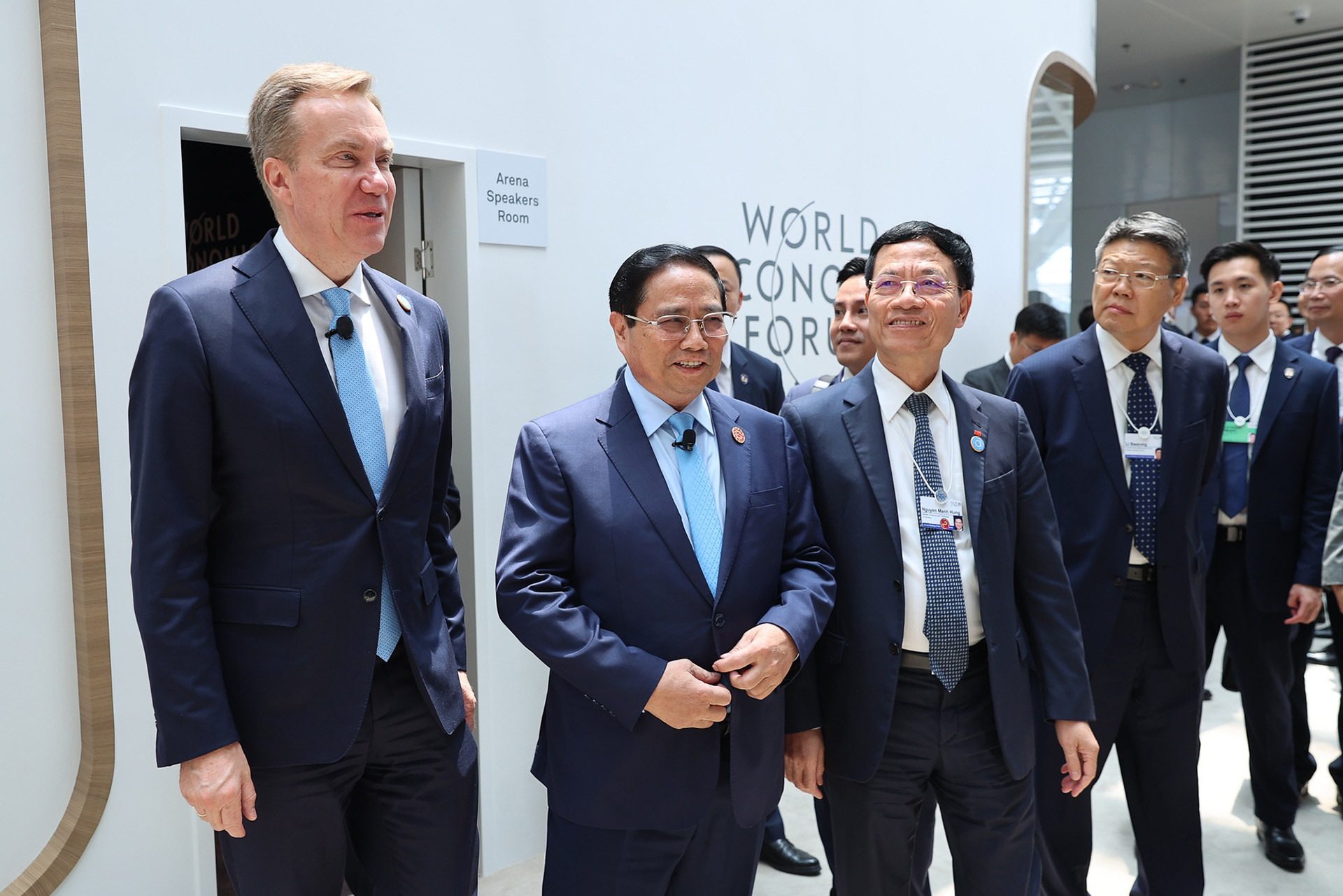
Prime Minister Pham Minh Chinh and WEF President Borge Brende attend the policy dialogue “Vietnam’s new era: From vision to action”. Photo: VGP/Nhat Bac
The dialogue centered on Vietnam’s new development era; economic self-reliance amid deeper global integration; the impact of geopolitical complexities on Vietnam’s development; and how Vietnam navigates major power rivalries.
Opening the dialogue, Borge Brende noted the session's overwhelming interest, saying, “Many guests are still waiting outside because the venue is over capacity.”
Vietnam has strong foundations for higher growth
Brende commended Vietnam's rapid economic growth in the current global slowdown. While global GDP is forecast to shrink to 2.5% this year, Vietnam aims for a 7-8% growth rate. He asked the Prime Minister about the secret behind Vietnam’s economic success and how the country maintains momentum without becoming complacent.
The Prime Minister explained that despite global downturns, Vietnam targets 8% growth in 2025 and double-digit figures in subsequent years to achieve developed and high-income nation status by 2045. He acknowledged that this goal is ambitious but achievable due to Vietnam's solid foundations.
These foundations include faith in the development path rooted in Marxism-Leninism, the teachings of Ho Chi Minh, and a thousand-year cultural identity, all adapted creatively to Vietnam’s context and global realities.
He emphasized Vietnam’s stable political system led by the Communist Party, a people-centric government, and citizen empowerment. The people are seen as the source of resources, motivation, and strength.
Economically, Vietnam ranks 32nd globally, is among the top 20 in trade and FDI attraction, and will see a 2024 GDP per capita of USD 4,700.
Vietnam also benefits from support by international partners and has signed 17 free trade agreements with key markets such as China, the US, EU, Japan, South Korea, and ASEAN.
Finally, the nation’s resilience is grounded in its experience overcoming past crises and risks.
Balancing relations through principle-based diplomacy
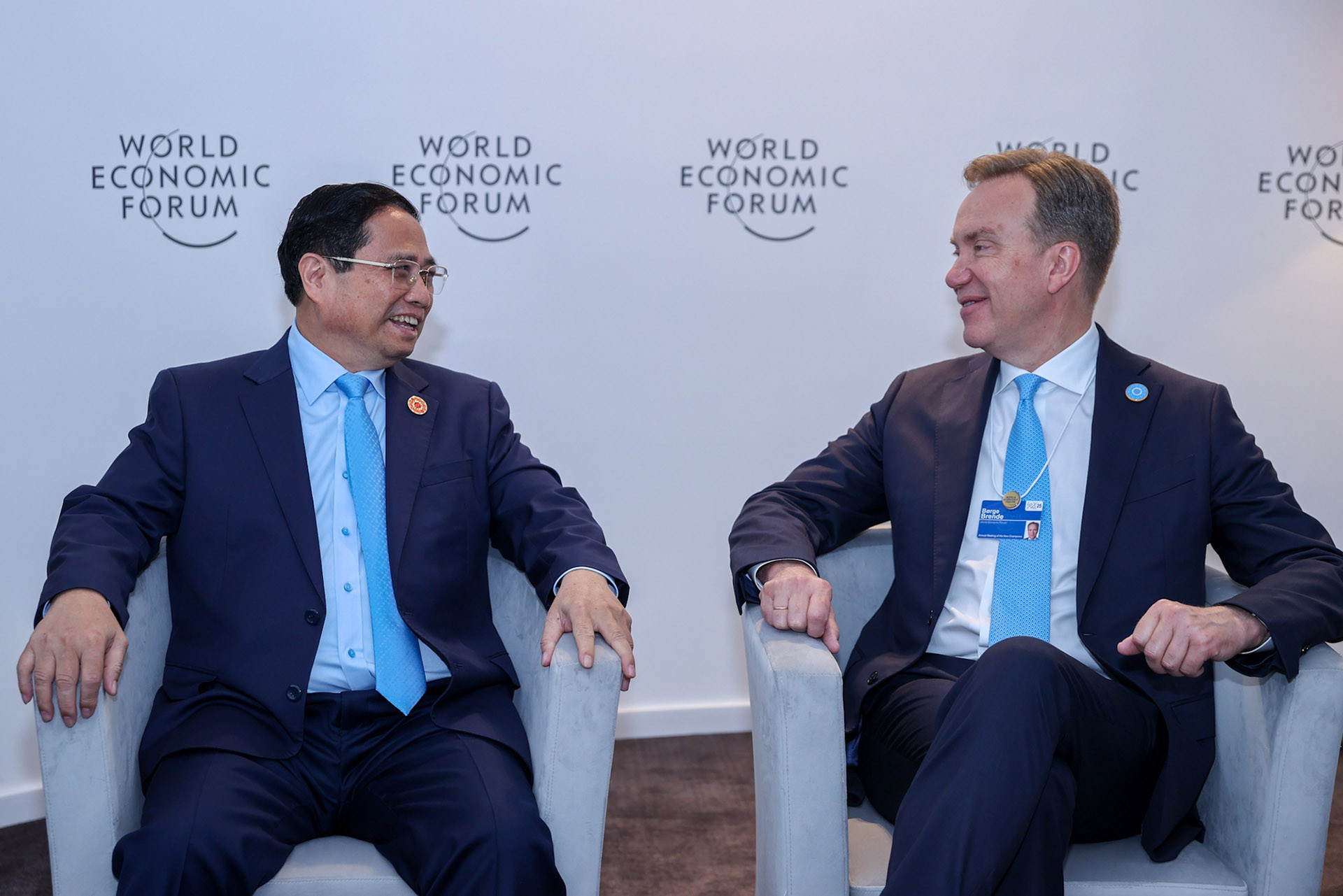
Prime Minister Pham Minh Chinh and Borge Brende in conversation before the policy dialogue. Photo: VGP/Nhat Bac
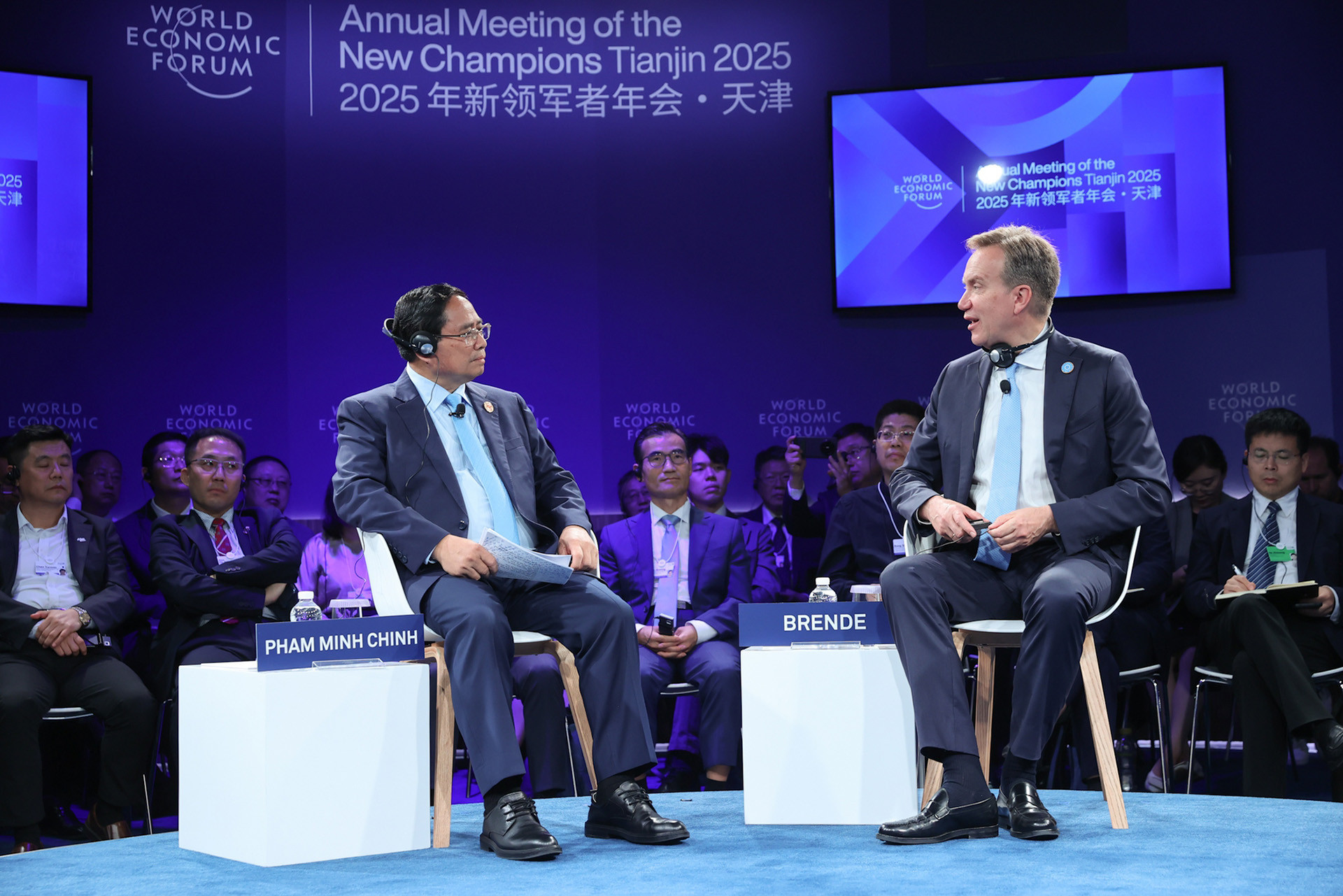
Borge Brende praised Vietnam’s rapid economic growth amid global challenges. Photo: VGP/Nhat Bac
When asked how Vietnam handles major power competition, the Prime Minister responded that with a GDP of nearly USD 500 billion and import-export turnover of around USD 800 billion in 2024, even small external shocks have large impacts. The US and China alone account for almost 50% of Vietnam’s trade volume.
Thus, Vietnam must pursue a flexible yet principled foreign policy. The country adheres to an independent, self-reliant, multilateral, and diversified approach. It aims to be a trustworthy partner and responsible member of the international community, upholding the "four no’s" defense policy: no military alliances, no siding against others, no foreign bases, and no use or threat of force in international relations.
Vietnam is also diversifying markets, products, supply, and production chains to maintain flexibility amid global uncertainties.
The Prime Minister said Vietnam successfully balances relations with all partners through calm, patience, and consistency-never panicking but always striving.
He stressed that Vietnam prefers dialogue over confrontation and is open to cooperation for resolving disputes and aligning mutual interests. When cooperation is viable, it’s fully pursued; when necessary, Vietnam defends its core interests vigorously.
As an example, he cited Vietnam’s journey from war and sanctions with the US to becoming a comprehensive strategic partner, thanks to mutual respect and future-focused collaboration.
Vietnam’s stance is built on confidence and determination, always seeking to turn challenges into opportunities.
Brende lauded this as a “very satisfactory answer,” marveling at how the US became Vietnam’s top export market just decades after the war. He then posed a hypothetical: “If someone told you during the war that 50 years later, as Prime Minister, the US would be your main export market, what would you have thought?”
The Prime Minister replied, “Everyone grows up. We all have a past, but we must live for the present and future. We choose the best path forward. If the past is good, we build on it; if not, we leave it behind.”
He added, “Personal growth depends on many factors, but one must be humane, live ethically, and do good for oneself and others. Power and wealth come and go. What matters is sincerity, trust, hard work, and hope for a better future.”
Resilience built on history, people, and determination
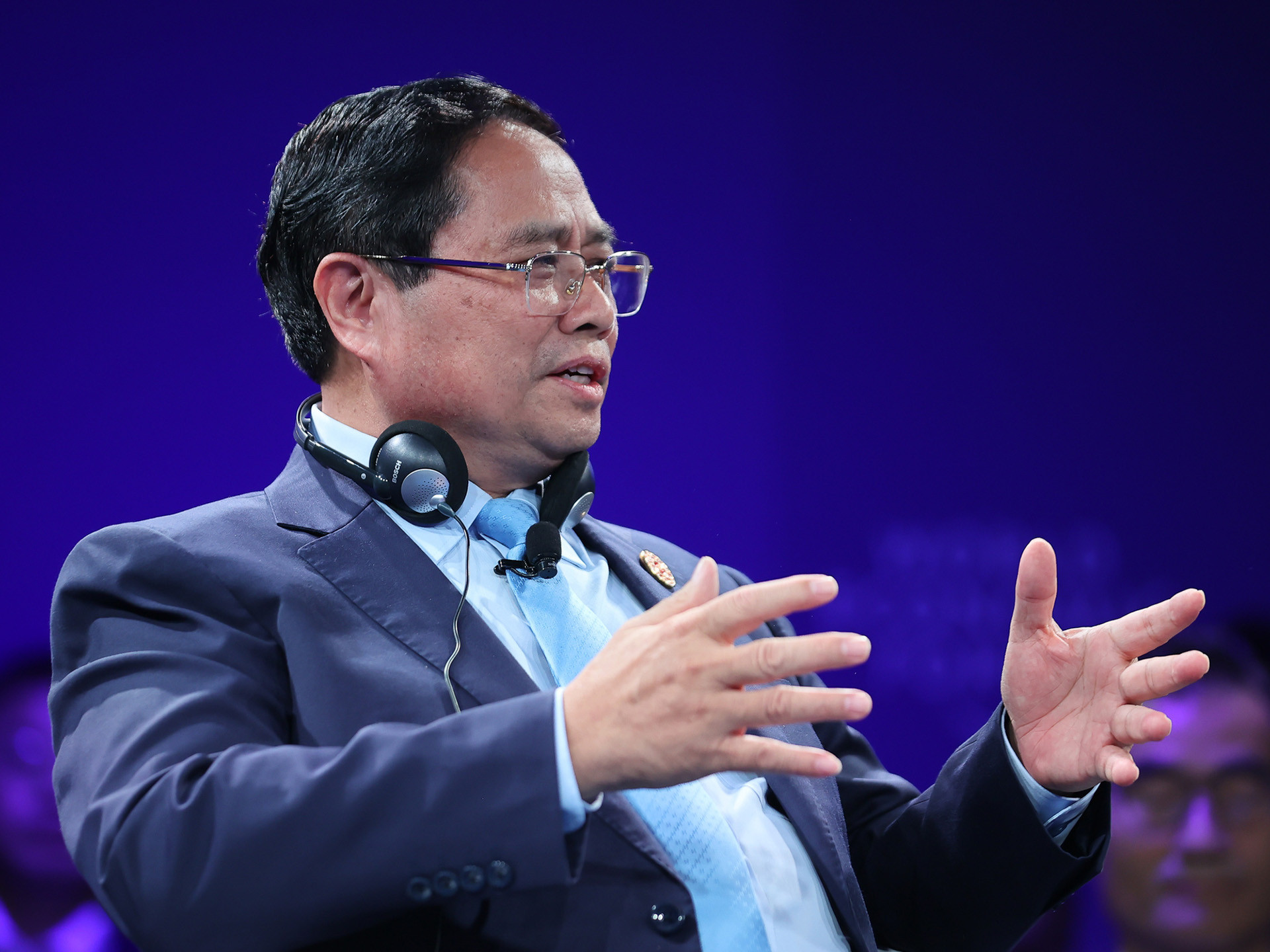
The Prime Minister reaffirmed Vietnam’s ambitious growth targets for 2025 and beyond. Photo: VGP/Nhat Bac
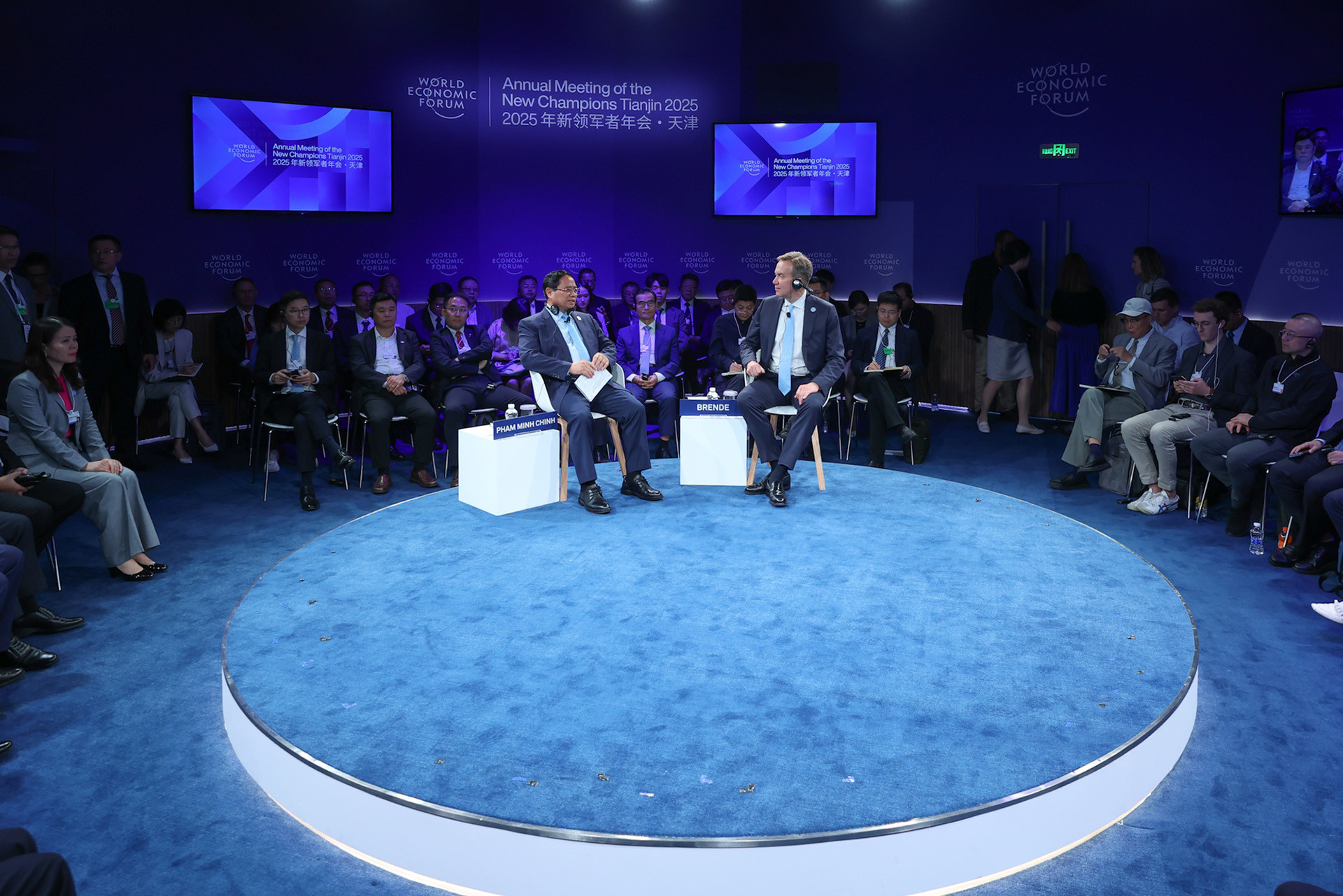
The Prime Minister emphasized Vietnam’s high trade openness and the importance of balanced foreign policy. Photo: VGP/Nhat Bac
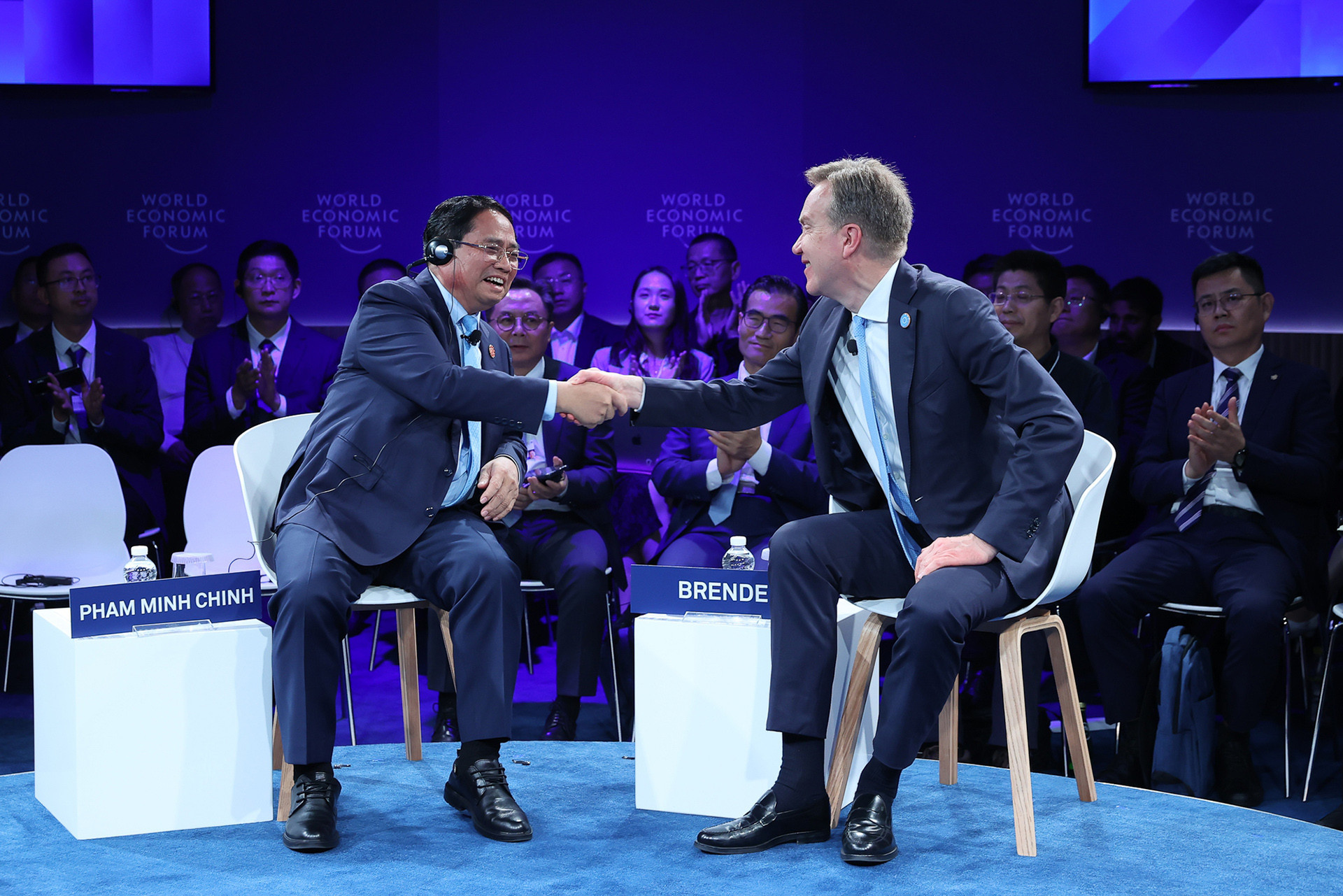
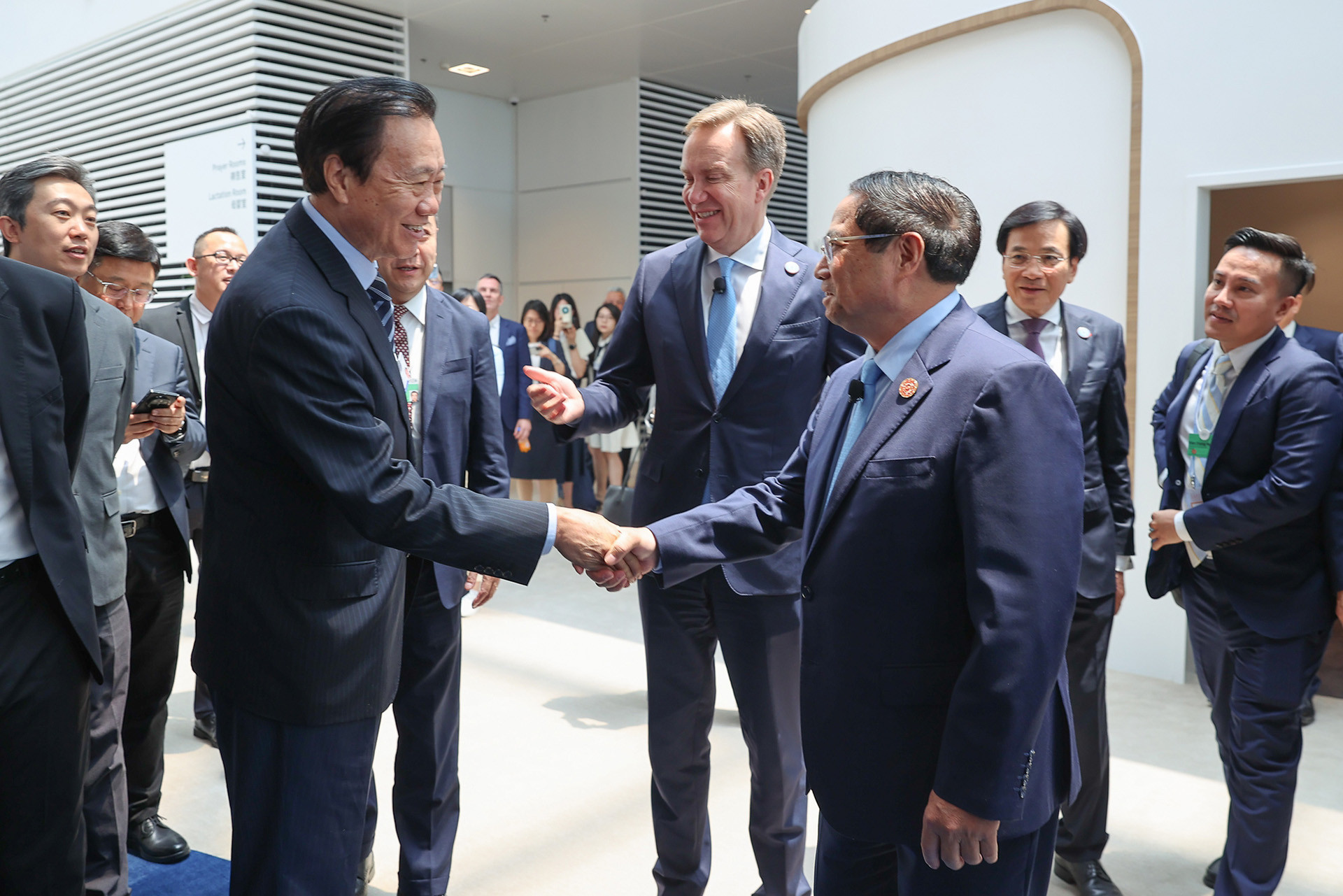
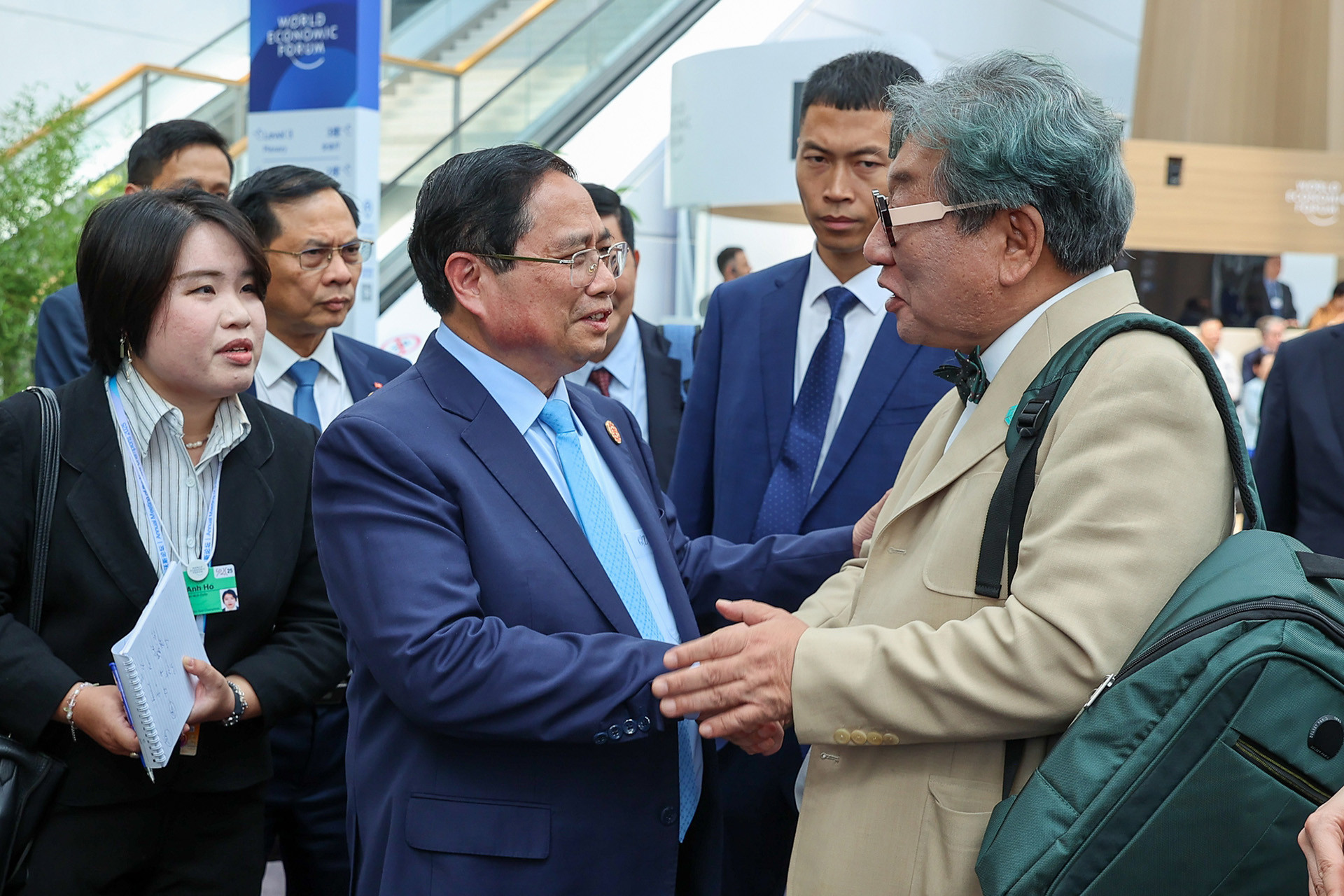
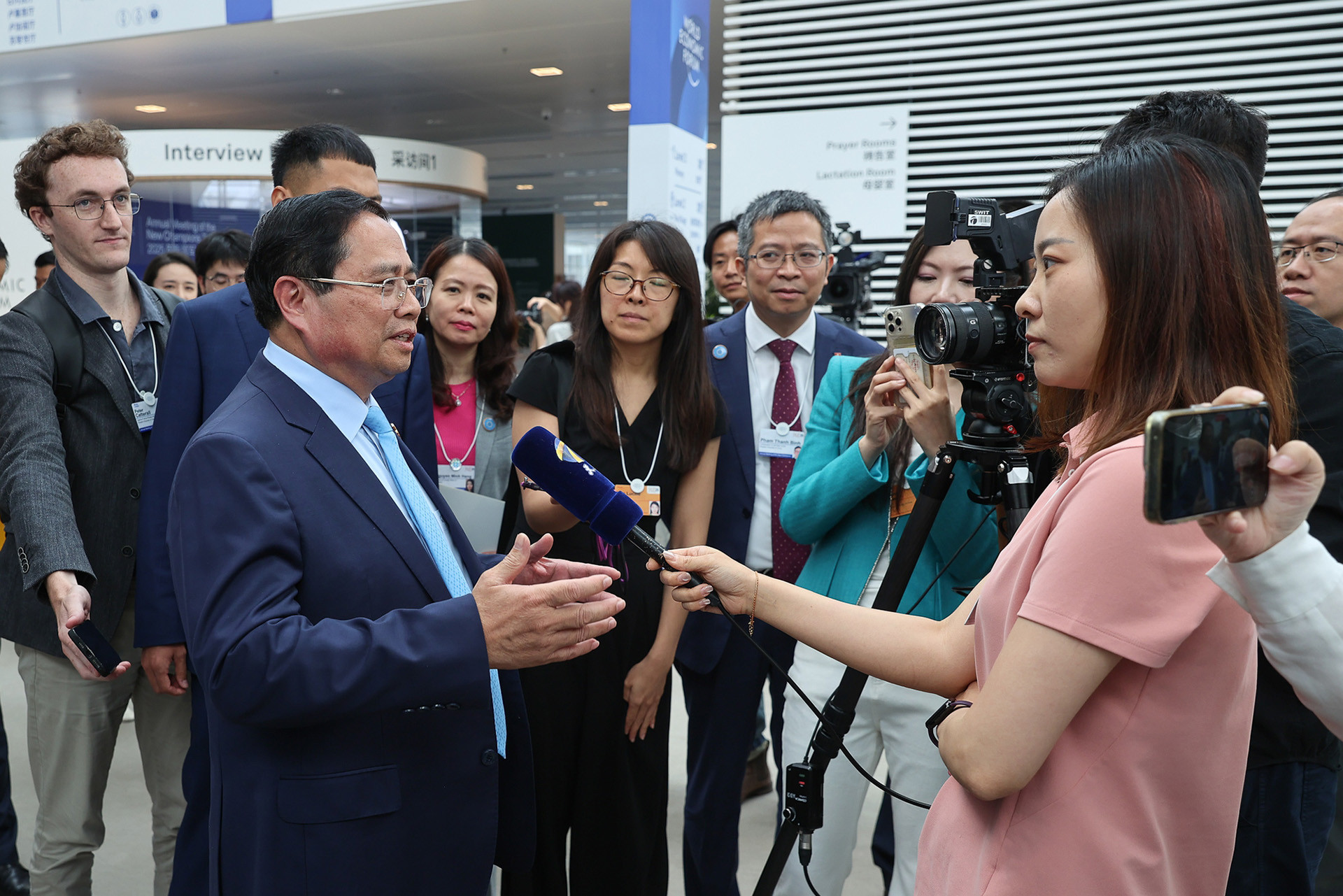
When asked about Vietnam’s development foundations, the Prime Minister noted the country’s painful 20th-century history. Millions suffered from war, including 3 million affected by Agent Orange and 300,000 fallen soldiers still missing. Bombs still explode, and every economic project requires mine clearance. After the war, Vietnam endured a trade embargo.
Yet, Vietnam rose through self-reliance and transitioned from a centralized, bureaucratic system to a market economy based on three pillars: eliminating subsidies, fostering a multi-sector economy (including private enterprises), and global integration.
Vietnam aims to build an independent, self-reliant economy while engaging deeply and effectively with the world. Global issues like pandemics, climate change, and strategic competition demand cooperative solutions.
Success, he said, hinges on harmonizing internal resources-people, natural assets, and cultural heritage-with external ones like capital, institutions, technology, smart governance, and human resource training. Relying solely on internal or external resources is unsustainable.
On the global outlook, he acknowledged that every nation and individual faces risks and crises. But the world also offers vast opportunities. Effective problem-solving requires optimal methods and a positive mindset.
“We must renew traditional growth drivers like investment, exports, and consumption while developing new ones such as science, innovation, digital transformation, green transition, and the circular economy. This new frontier has no limits when guided by creativity and correct thinking.”
He concluded optimistically, “Resources come from thinking, motivation from innovation, and strength from the people. The decisive factors are time, intelligence, and decisiveness. Regardless of global conditions, with proper methods and adaptive thinking, any country can thrive. We are always ready to face challenges, confident in ourselves and in our collective wisdom and decisiveness, turning pressure into progress.”
Brende called it a “perfect conclusion to an optimistic dialogue-something much needed in today’s climate” and added, “I hope to be like Vietnam’s Prime Minister: seeing the glass half full rather than half empty.”
VGP